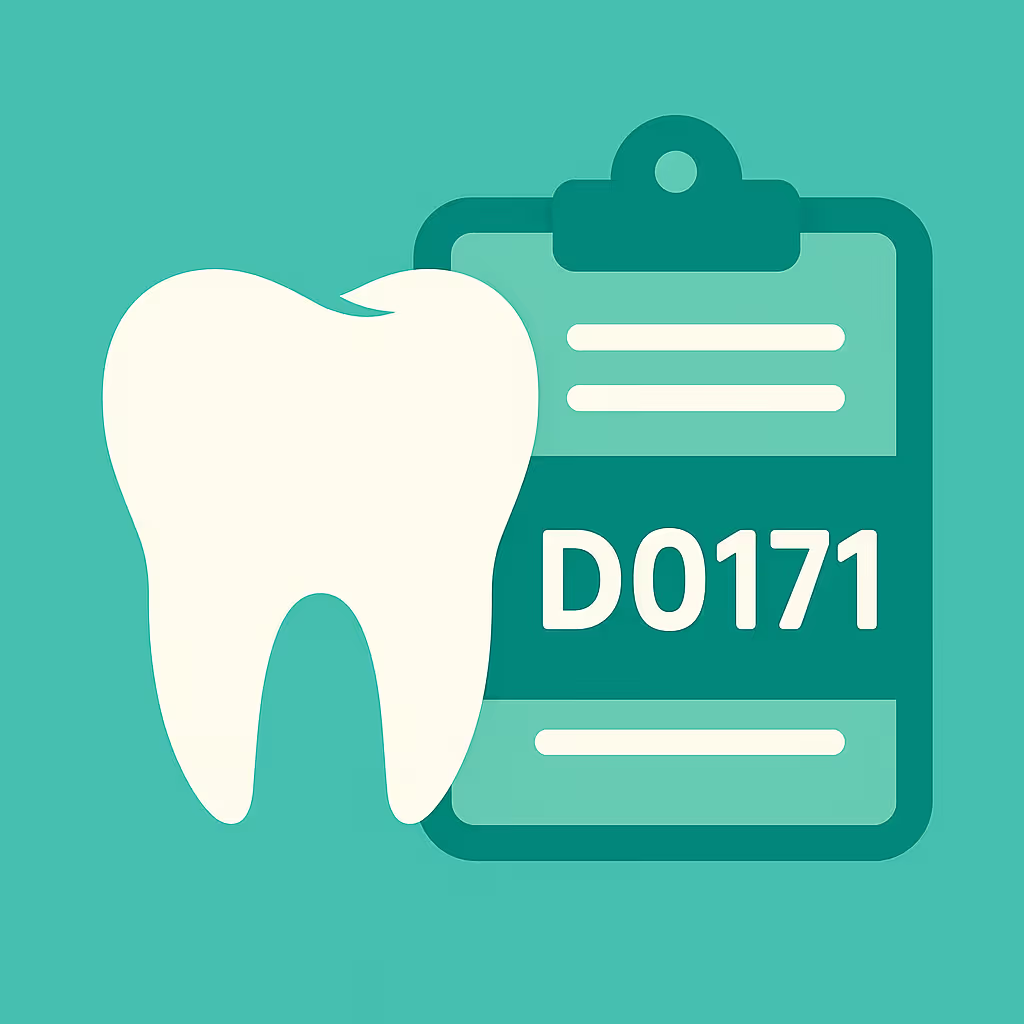Understanding Dental Code D2751
When to Use D2751 dental code
The D2751 dental code is used to report the placement of a crown made of porcelain fused to predominantly base metal. This CDT code is appropriate when a patient requires a full-coverage restoration due to significant tooth structure loss, extensive decay, or fracture that cannot be restored with a filling. It is most often used for posterior teeth where strength and durability are essential, but a full gold crown is not indicated or the patient prefers a more esthetic option than metal alone.
Proper use of D2751 requires clinical justification. The crown must restore form and function, and the remaining tooth structure must be insufficient for a direct restoration. Documenting the extent of decay, fracture lines, and previous restorations is crucial for claim approval.
Documentation and Clinical Scenarios
Accurate documentation is key for successful reimbursement of D2751. Best practices include:
- Pre-operative radiographs showing the extent of decay or fracture.
- Intraoral photographs to visually support the need for a crown.
- Detailed clinical notes describing why a crown is necessary (e.g., "Tooth #30 presents with a fractured cusp and large failing amalgam restoration. Insufficient tooth structure remains for a direct restoration.").
- Charting previous restorations and any failed attempts at repair.
Common clinical scenarios for D2751 include:
- Extensive caries undermining cusps on a molar.
- Fractured posterior tooth with loss of structural integrity.
- Replacement of a failing existing crown made of similar materials.
Insurance Billing Tips
To maximize claim acceptance for D2751, follow these insurance billing best practices:
- Verify patient benefits before treatment to confirm crown coverage and frequency limitations.
- Submit comprehensive documentation (radiographs, photos, narrative) with the initial claim to reduce the risk of denials.
- Use precise narratives that explain the clinical necessity for a crown versus a filling.
- If denied, review the EOB for specific reasons and submit a timely claim appeal with additional supporting documentation.
- Be aware of alternate benefit clauses—some plans downgrade D2751 to a less expensive crown type. Clearly communicate this possibility to patients during financial discussions.
For related procedures, such as crowns made of different materials, reference the appropriate CDT code (e.g., D2750 for porcelain fused to high noble metal).
Example Case for D2751
Case: A 54-year-old patient presents with a fractured lower right first molar (tooth #30). The tooth has a large, failing amalgam restoration and visible cracks extending into the cusps. After clinical evaluation and review of radiographs, the dentist determines that a direct restoration is not feasible. The treatment plan includes a porcelain fused to base metal crown.
Billing Steps:
- Verify insurance coverage for crowns and document any frequency limitations.
- Capture pre-op radiographs and intraoral photos to support the claim.
- Document the clinical findings and rationale for a crown in the patient chart.
- Submit the claim using D2751 with all supporting documentation.
- Follow up on the claim status and address any requests for additional information promptly to avoid AR delays.
This approach ensures proper reimbursement and minimizes claim denials, supporting a healthy revenue cycle for your dental practice.





